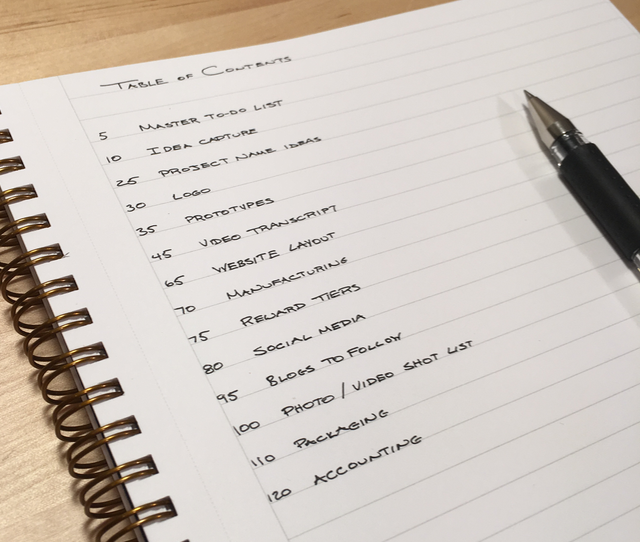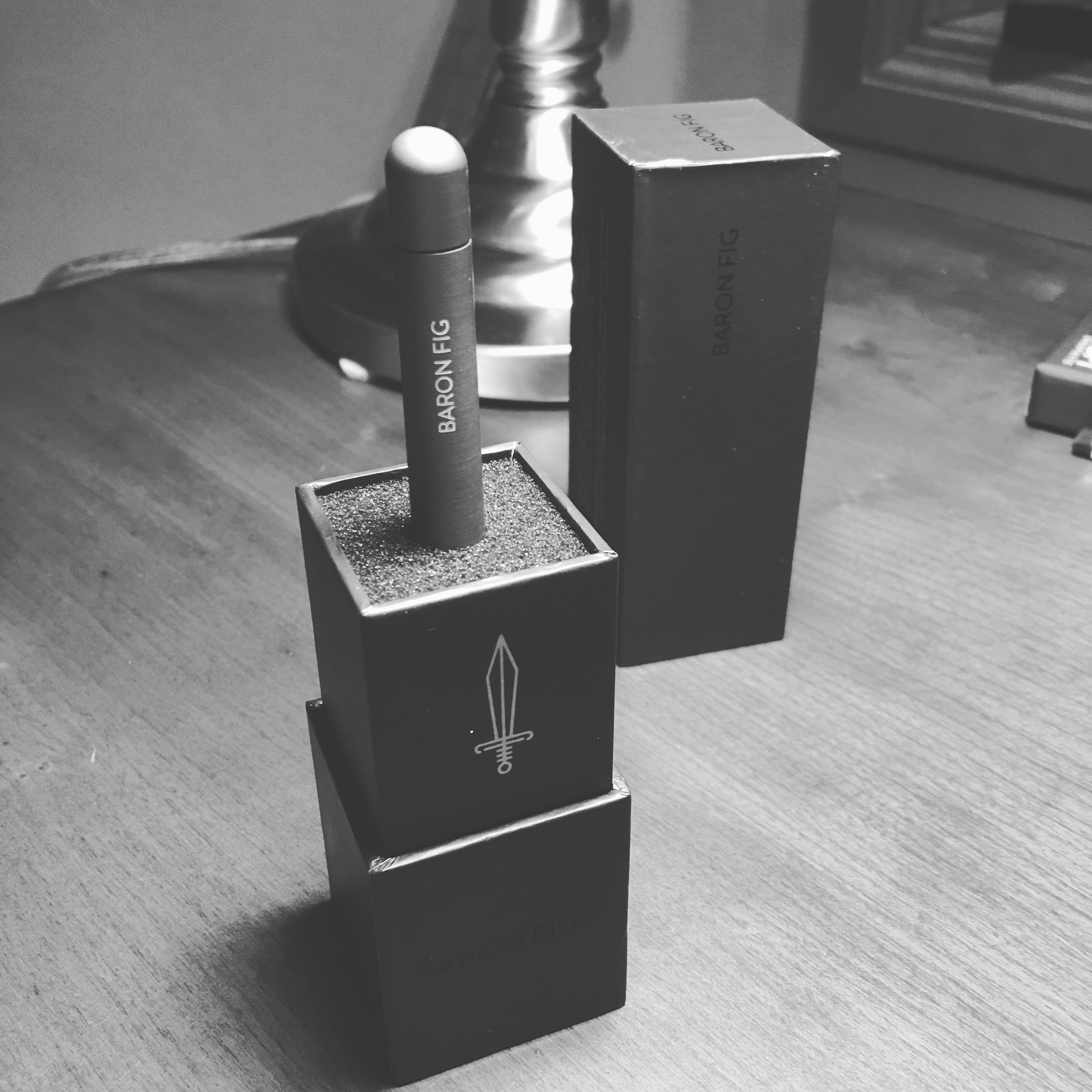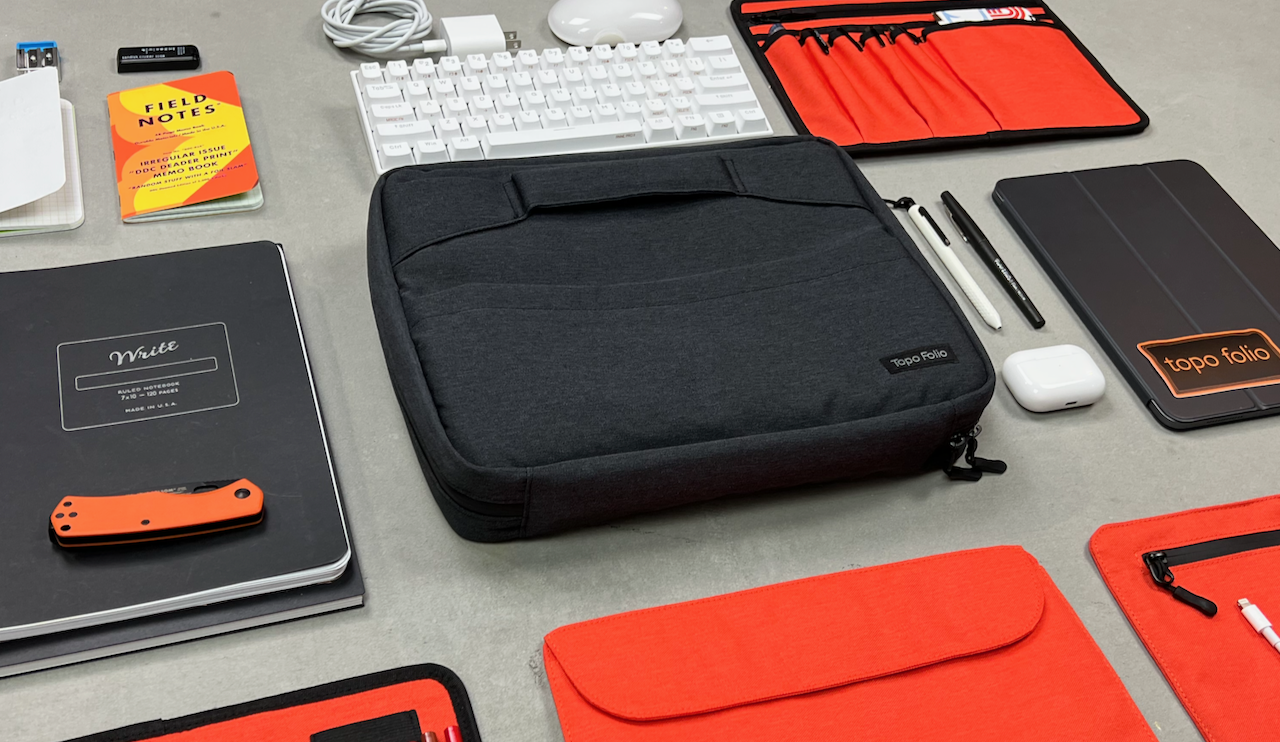There is a lot of advice on how to prepare for a successful crowdfunding campaign, but there isn’t a lot of information about how to keep your campaign prep organized. From designing, to creating reward categories, to outlining project pages, and finally, thinking up the perfect video, it all needs to be captured and assembled. Below is my take on how to organize a notebook to keep track of all the moving parts, but this can be used with Google documents, Excel spreadsheets or other tools.
Table of Contents - Page 1
Even if you don't have page numbers, the ToC is necessary to find everything. You can use page tabs to find sections, and you can also use this system to mark the sides of the pages.
Master To-Do list - P.5
This list is going to be long so leave about 10 pages before your next section.
Idea Capturing/Brainstorming - P.10
Another large section of the notebook as this will be taken up with all your daily thoughts that you are not sure where to put them.
Project Name - P.25
Use Namechk to see if the project name or your company name is available across social sites.
Logo Designs - P.30
On logo design, "It's one thing to see your logo just floating on a PDF...rarely will you see it that way. The way your going to see it is on some stupid little Instagram in the corner....so show context." Aaron Draplin
This is a great intro to logo design and a very tame Draplin compared to most of his presentations...
Prototype Sketching - P.35
There is no better resource to quickly learn how to sketch than from Spencer Nugent. Here is his basic video playlist. Drawing out what you are thinking helps communicate your ideas better than any written word. You will need this skill to clearly describe what you want done for prototyping and manufacturing.
Video Transcript/Storyboard- P.45
Telling your story well is the key to success in crowdfunding and with only 1-3 minutes to get it right, a clear outline is important. The Kickstarter handbook has a good start on this topic here. If you need inspiration, here is a well done, beautiful project video from Appointed Notebooks.
Website/Landing Page Layout - P.65
Anyone can make a website, but a good website is easy to understand, and gets people excited about your project. Remember to get the email signup near the top of the page so folks can signup ahead of the project launch.
Manufacturing Work - P.70
If you are working with a manufacturer of any kind, you have to take on the task of project manager to keep them up to date, as well as remember specific things you need them to do. Track their progress and take notes on changes needed to prototypes.
Reward Tiers - P.75
Creating unique and engaging reward levels can make or break your project. CraigMod has an objective, detailed analysis of reward tiers to help decide:
Social Media Posts - P.80
As things get crazy during the campaign, many crowdfunding sites advise preparing your social media posts ahead of time, so keep track of ideas to hook readers into reading about your post. Find the right social outlets, and organize your posts to keep people up to date and informed.
Blogs To Follow - P.95
If you don't have a following of backers yet, Jamey Stegmaier recommends first building a 'tribe' of interested readers well in advance of your launch date. To help start this process, one key point Jamey makes is to go to other blogs and contribute in an honest way to help join the community you are trying to appeal to. Further reading on this concept: 10 Daily Actions to Build Your Crowd.
Photo/Video Shot List - P.100
Creating visually appealing images and video is how to keep backer's attention. Don't use stock videos and images, create your own original content and keep track of the shots you need in this section.
Packaging Sketching and Ideas - P.110
99designs and fiverr are great resources to help get packaging designs, but if you are going on your own and want more than bubble wrap, keep track of ideas here. Baron Fig has a great packaging system to hold their recent Squire pen they launched on Kickstarter.
Accounting - P.120
What most people consider the worst part of starting a Kickstarter project, keeping track of expenses and hopefully income, is needed and even if you hire an accountant, you still need to track it all. As these are typically all business related expenses, this step can help save a lot in taxes.
After talking to a few other successful project creators, there are a number of digital tools available like Omni Focus, Trello, and Google Docs to allow for collaboration and project management. If you have any additional thoughts or advice for other creators please share them below!






